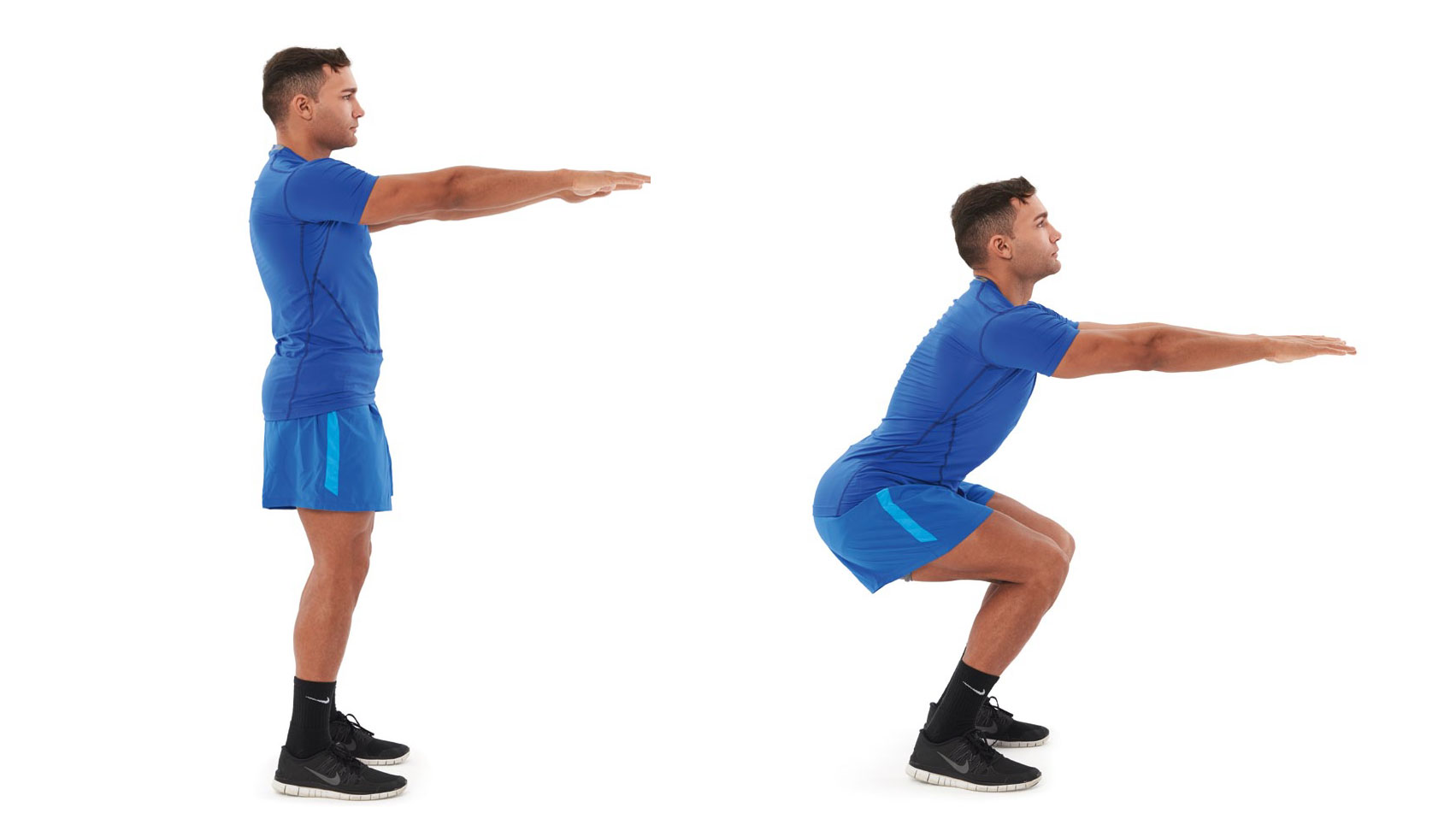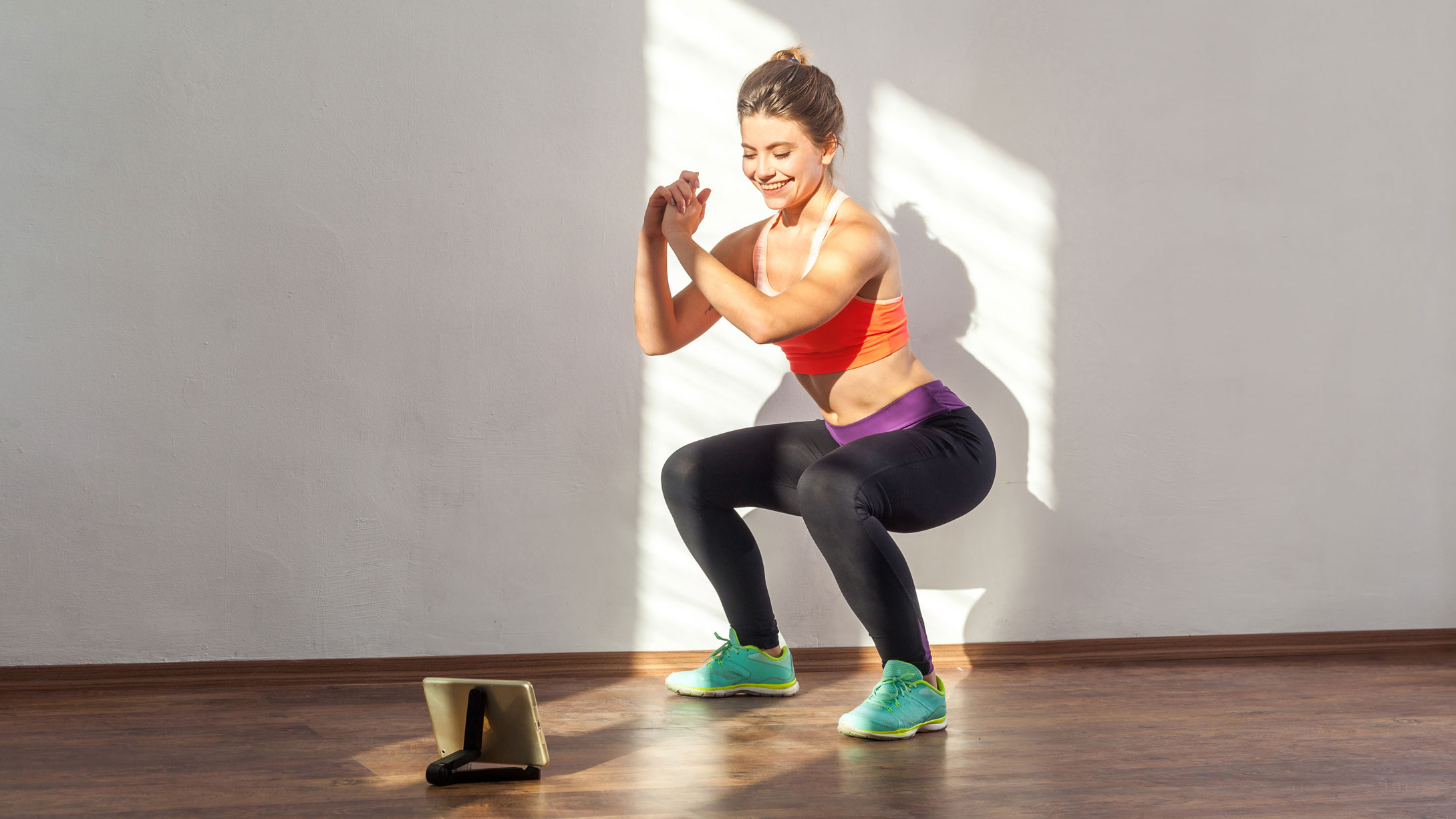Squats challenge: How to get fitter and stronger in just one month
A new take on the classic 30-day squat challenge will help you strengthen and sculpt your lower body


If you look around the net for long enough, you’ll find plenty of fitness magazines and websites recommending the 30-day squats challenge. The classic squats challenge is said to be perfect for people looking to start their fitness journey, as well as those who‘d like an easy way to tone up their legs, bum and core while stuck at home.
- How to do a squat
- How to do a barbell squat
- After more tips on toning up? Here's how to lose weight from your hips and how to lose weight from your thighs
The classic squats challenge recommends you do a simple bodyweight squat over and over again, starting at 50 repetitions on the first day. Participants in the challenge gradually increase the repetitions they do over time, ending with 250 squats on the final day of the challenge. It’s easy to grasp, can be done at home with no equipment and it’s easy to measure your progress, which is probably why it’s so popular.
However, doing reps of the same exercise at the same speed, over and over again, might get a little repetitive. It’s also far from the most efficient way of training your body to get stronger.
Squats challenge: Introducing the tempo squat

“When it comes to developing strength with your body weight, rather than increasing your reps, you should be playing around with rep range and tempo,” says Zoe Toumazos, master trainer at top London gym chain 1Rebel. In this case, “tempo” means how many seconds your squat lasts for: for example, you could lower yourself down over two seconds, pause at the “bottom” for one second, and push upwards to a standing position over one second.
“The tempo is very important when it comes to increasing tension in the muscles and recruiting different muscle fibres. You’d be better off playing around with rep ranges, including different kinds of tempos and including rest days. By the end of the month, you should be able to do 250 air squats anyway.”
Toumazos is right. Papers published in the Journal of Strength and Conditioning Research show our muscles can lift less weight at a slower tempo. By slowing down our bodyweight squats, we’re actually increasing the stress on our muscles, as if we were doing squats with a barbell on our backs.
“If you’re a beginner, you might start with a tempo of 2:2” said Toumazos. That’s taking two seconds to lower yourself down into your squat, not pausing at the bottom, and taking two seconds to come up again. Check out how to do the move in full below:
Get the Fit&Well Newsletter
Start your week with achievable workout ideas, health tips and wellbeing advice in your inbox.
- Aching? Pick up one of the best foam rollers to aid muscle recovery
Squat challenge: How to do a bodyweight squat

- Stand up tall with your feet roughly shoulder-width apart. Your arms should be held out in front at shoulder level.
- Slowly lower your backside as far as you can by bending your knees and pushing your hips back. Your weight should be on your heels.
- Slowly return to the starting position.
- Throughout the exercise, your core should be braced, by pulling in your abdominal muscles and holding them in that position.
Squats Challenge: The programme
Toumazos recommends beginners start off with sets of five repetitions. Once you’ve done five slow “tempo squats” at 2/0/2, take a one minute rest before trying another couple of sets. The next session, try 10 squats at the same temp, working your way up to 20.
Once you can do 20 squats in a row at a 2/0/2 tempo, the next stage is to change it up. This time, go back down to sets of five squats and slow the descent down to three seconds. However, you should then pause at the bottom of the squat for two seconds, before powering upwards for a count of two as normal. We’ll refer to this as a 3/2/2 tempo.
“[This method] targets your hamstrings, core and glutes, developing your muscles in a variety of ways rather than repeating the same squat over and over again,” says Toumazos. Try the programme below for her new, improved 30-day squat challenge, focusing on tempo instead of the number of reps you’re doing.

- Week 1
5-20 bodyweight squats at a 2/0/2 tempo. - Week 2
5-20 bodyweight squats at a 3/2/2 tempo. - Week 3
5-20 bodyweight squats at a 3/3/3 tempo. - Week 4
5-20 bodyweight squats at a 3/2/1 tempo.
The last week requires you to power upwards for one second rather than at a slower pace of two or three, to ensure you’re training the explosive movements you’ll use for jumping and sprinting. Toumazos also recommends checking your form regularly throughout the challenge: the best way to do this is to film yourself while squatting, ensuring you’re following our tips above.
Done right, and your legs, glutes and core will be strong enough to crank out 250 bodyweight squats at the end of the month, while doing far less reps than many others who have gone through the more traditional squat challenge.
Liked this?
Matt Evans is an experienced health and fitness journalist and is currently Fitness and Wellbeing Editor at TechRadar, covering all things exercise and nutrition on Fit&Well's tech-focused sister site. Matt originally discovered exercise through martial arts: he holds a black belt in Karate and remains a keen runner, gym-goer, and infrequent yogi. His top fitness tip? Stretch.